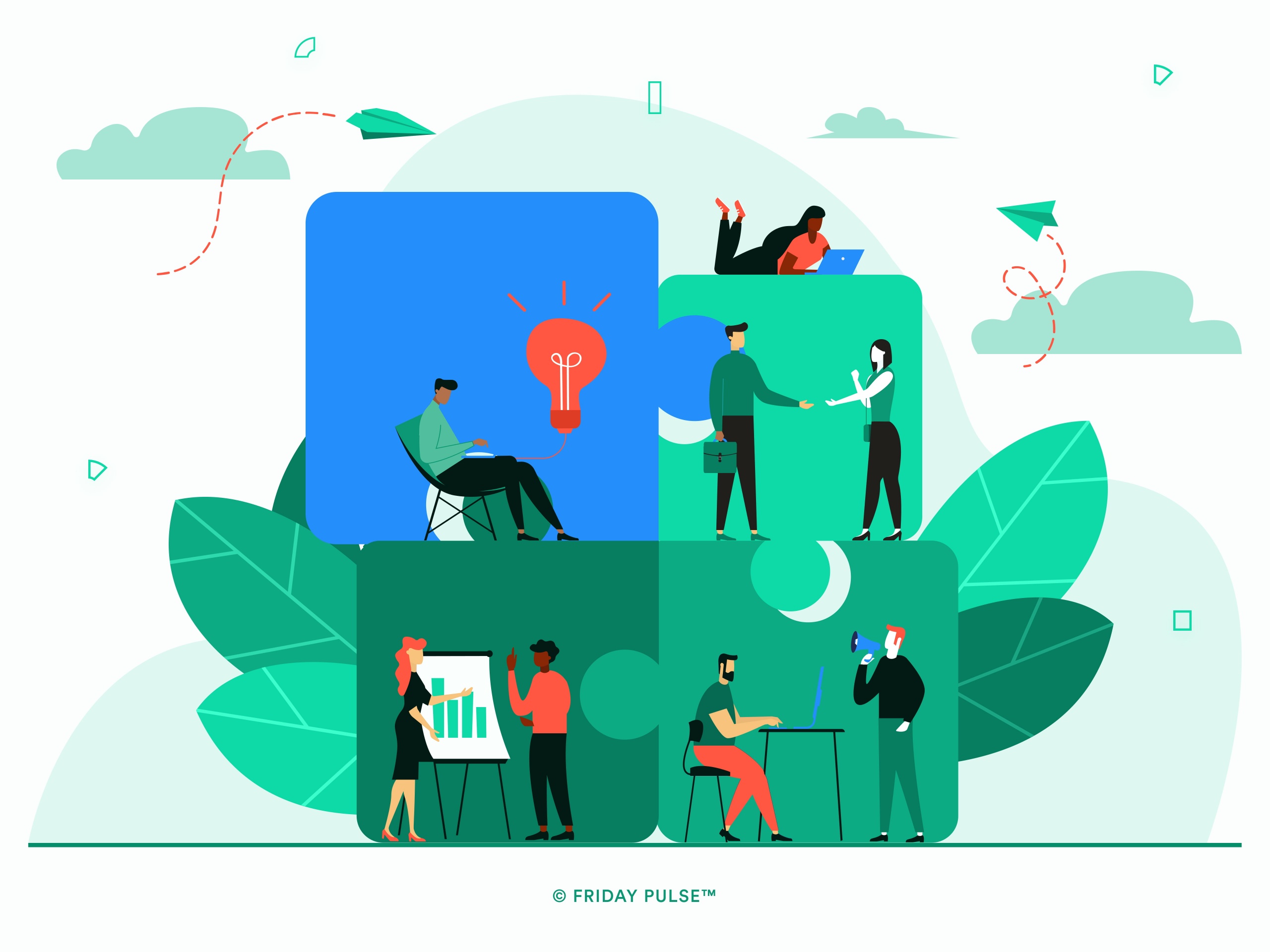Work and life right now are…OK. Not great, not terrible — just OK.
It\'s certainly not easy. As we highlighted earlier this month, the
average employee experience is down across all of our clients. While there\'s been some
bounce back from the shock of lockdown in mid-March, the average score
has still decreased to around 65 points (on our 0-100 Happiness KPI)
from 70 points pre-COVID.
Averages hide a lot of variances. This week, we thought it would be
helpful to look at the data on people\'s median response — the most
popular response on the Friday Pulse platform. Each week people are
asked, \"How have you felt at work this week?\" They can then respond
with one of the following five options:
- Very unhappy
- Unhappy
- OK
- Happy
- Very happy

In the pre-COVID world, the most popular response has always been happy
— 4. Happy is a common response in subjective data, especially in
developed economies. However, over the last 10 weeks, the median in our
client responses has dropped to OK – 3. While there is still a
healthy 37% of employees who report that they are happy, and 14%
reporting being very happy, it’s concerning to see the shift
towards OK. 38% of respondents report that they are *OK*, a 9%
increase from pre-COVID.

If we apply this shift, from feeling good at work to only feeling OK,
across the whole of the UK and US workforce then nearly 20 million
people are now OK where once they were happy.
This grim picture comes from percentages based on our clients\'
responses — atypical businesses. They already focused on employee
wellbeing before the crisis, and they have access to data about their
employee\'s work experience every week — data they act on. In reality,
20 million people is an underestimation. Companies that do not focus on
wellbeing are likely to have higher unhappy responses. 20 million also
does not account for the millions of those furloughed (7.5 million in
the UK) or unemployed (2.1 million in the UK, 36 million in the US).
Why are we in this OK funk?
The consequence of OK is financial. We’ve talked about how a half
point shift on our five point scale can result in a $1 million loss because of a loss
of creativity and productivity.
Undoubtedly, many people are just grateful to have a job in this market
— a feeling that is likely suppressing the number of people responding
as unhappy or very unhappy, right now. It\'s for this reason that we
insist on having a response labelled OK. It acts as a soft \"not
great.\" Not everything is good or bad. Some experiences are just OK —
not terrible, but not great either.
This is the majority of employee experience now. People are grateful for
work, but it\'s not a cure-all. In some of our clients we’ve found that
the extra cognitive strain in people’s lives has led to employees acting
out in meetings. HR departments have had to tread the line between
empathy and drawing the boundaries around acceptable behaviour, pandemic
or not.
For many, the novelty factor of remote working and face-to-face video
conferencing has vanished, meaning the solutions that worked at the
beginning of the pandemic are not as effective now. People jump in and
out of virtual meetings as fast as they can and the jovial small talk
that once populated team interactions has disappeared.
As a whole, we’re coming to accept that there is no returning to the
“normal” of our past. Every week, firms like McKinsey publish pieces
on what the next normal may be. But with that acceptance, comes a price — a state of
OK.
How to help people move from OK to happy
In December, before the pandemic, Harvard Business Review conducted
a survey into the logistics of teamwork and the professionals that responded reported that
they found working across virtual teams challenging. Nearly 76% found
it difficult to feel connected with their teams due to distance or
time zones. These problems have only become exacerbated with the
pandemic.
Businesses that want to succeed and thrive in a post-COVID-19 world need
to start thinking about how to improve their employee experience — at
the very least back to where it was before the pandemic.
Here are some thoughts on how you can do that.
*How do you really feel?
*We\'re big advocates on having real discussions. To go beyond OK, ask
people how they feel and follow up with open-ended questions which will
deepen conversations. If you leave space for people to answer, you\'ll
be amazed by the collective wisdom you unlock.
Reflect as a team
**Taking half an hour every week as a team to reflect on how the week
has gone is a great way to build on what is going well, and tackle what
isn\'t. When a team reflects together, they can feel an increased sense
of collaboration and creativity. These discussions are then reflected
in improved innovation, productivity, and profitability.**
Consistently be consistent
Any kind of positive change has to be brought about by consistent
effort. It can\'t be
done with one-off surveys or asking how someone is faring once a
quarter. It may be difficult at first, especially with Zoom fatigue
setting in, but the efforts do pay off in more resilient teams and
higher trust levels.
Here to help
During this pandemic period, we are committed to helping businesses
build better work cultures and improve employee morale — assisting teams
to go from OK to happy. That’s why, we are continuing to
offer companies and teams (50 – 1,000 employees) free access to our Friday Pulse people
platform for 12 weeks.
For more information on how we can help your organization weather the
crisis please contact our Head of Helping People, Clive Steer
at clive@fridaypulse.com





